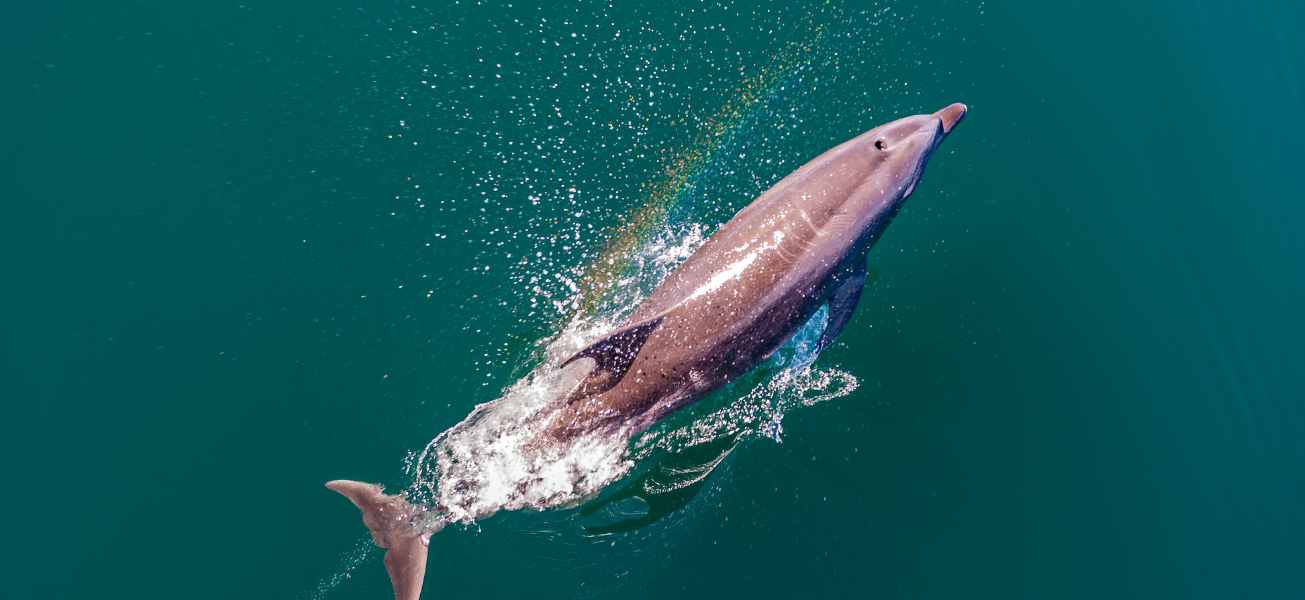Why are dolphin cruises memorable?
Dolphins are fun, smart, social, and super intelligent. They’re playful, intelligent, and oh-so-friendly. A cruise to see wild dolphins is an experience you’ll never forget.
However not all dolphin cruise tours care about these magnificent creatures, and this can cause harm to them. You don’t want to harm the dolphins you love do you? If not, read on to learn how to pick a dolphin cruise experience with a responsible tour operator.
Why pick a responsible dolphin cruise tour?
When it comes to the ocean, nothing beats the thrill of cruising in a boat alongside wild and free dolphins.
But did you know that when you choose a responsible dolphin cruise tour, you’re doing more than just having a good time? You’re also making a powerful statement about animal welfare and conservation.
Here’s why it’s awesome to pick a responsible dolphin cruise tour:
1️⃣ You’re supporting the freedom and wellbeing of dolphins, rather than confining them to small tanks, where they often suffer from stress and health problems.
2️⃣ You’ll have a memorable experience in the dolphins’ natural habitat – the endless blue ocean!
3️⃣ You’re promoting sustainable tourism and boosting the local economy.
4️⃣ You’ll learn loads about these amazing creatures and their natural behaviours from experts who really know their stuff.
How do you pick a responsible dolphin cruise tour?
Not all tour operators are created equal. Some truly respect dolphins and their habitats, while others, well… not so much.
What are the things to look out for?
✅ The operator lets dolphins decide how and when to interact with humans
✅ They’ve got the green light from relevant authorities, respect local regulations and follow national dolphin watching guidelines
✅ They have an eco-certification
✅ They minimise their impact on nature (like using eco-friendly boats)
✅ They’re all about sustainable practices (like recycling and energy efficiency)
✅ They teach visitors about local species, habitats, and conservation issues
What are the red flags?
On the flip side, here are some red flags to avoid:
❌ Letting people feed dolphins
❌ Letting people touch or ‘kiss’ dolphins
❌ Chasing dolphins
❌ Using jet skis or parasailing equipment
Know the facts: red flags for dolphin cruise tours
Let's dive a bit deeper into why some things are big no-nos when it comes to dolphin cruise tours.
Feeding dolphins: bad news
Dolphins who are fed by humans can become lazy hunters and don’t teach their young how to hunt. It also encourages dolphins to come closer to shore and can lead to injuries from vessels and fishing equipment.[1]
Touching dolphins: hands off
Touching dolphins might seem harmless, but it can actually stress them out and disrupt their behaviour. 🙅♀️ Plus, it can spread diseases between humans and dolphins.[2]
Chasing dolphins: wrong race
Boats can really disturb dolphins if they get too close. This can disrupt important behaviours like feeding and caring for young ones. This is why boats should stick to the regulated distance, stop the boat and let dolphins come to them. Dolphins are curious creatures, they’ll be sure to swim by and say hello. 🚤
Jet skis: too noisy
Underwater noise pollution from jetskis and parasails can mess with dolphins’ communication, hunting, and navigation skills. So, we’re all about low-noise impact vessels – quieter, greener, and dolphin-approved 💚
What are Action for Dolphins' Responsible Marine Mammal Tourism Guidelines?
The operator agrees that they meet the following requirements:
Complies with relevant federal legislative requirements, state or territory legislative requirements and applicable voluntary codes of conduct, codes of practice and guidelines.
Follows all of the recommendations in the Australian National Guidelines for Whale and Dolphin Watching 2017.
Has permits to operate the tours from relevant authorities, and complies with any additional conditions imposed by those permits.
Does not permit people to swim with, touch, or feed marine mammals.
Does not support keeping animals in captivity for entertainment.
Operator’s vessel stays in the caution zone for maximum 30 minutes if 3 vessels are present, and maximum 10 minutes if a 4th vessel is waiting to enter the caution zone.
Focuses on optimal use of resources, operations leave minimal impact on the environment and contributes to conserving the environment, as demonstrated with certification from a reputable ecotourism certification scheme.
Provides passengers with educational information about cetacean conservation, including information on local species, habitats, behaviours, threats facing the local area and the conservation status of the animals in the region.

What's the deal with eco certifications?
Eco certifications are like gold stars for tour operators who are committed to sustainable, nature-based tourism. If you’re not sure whether an operator has one, just ask them!
At Action for Dolphins, we also love operators who educate visitors about conservation, follow sustainable practices, and do their own research or help out research groups.




